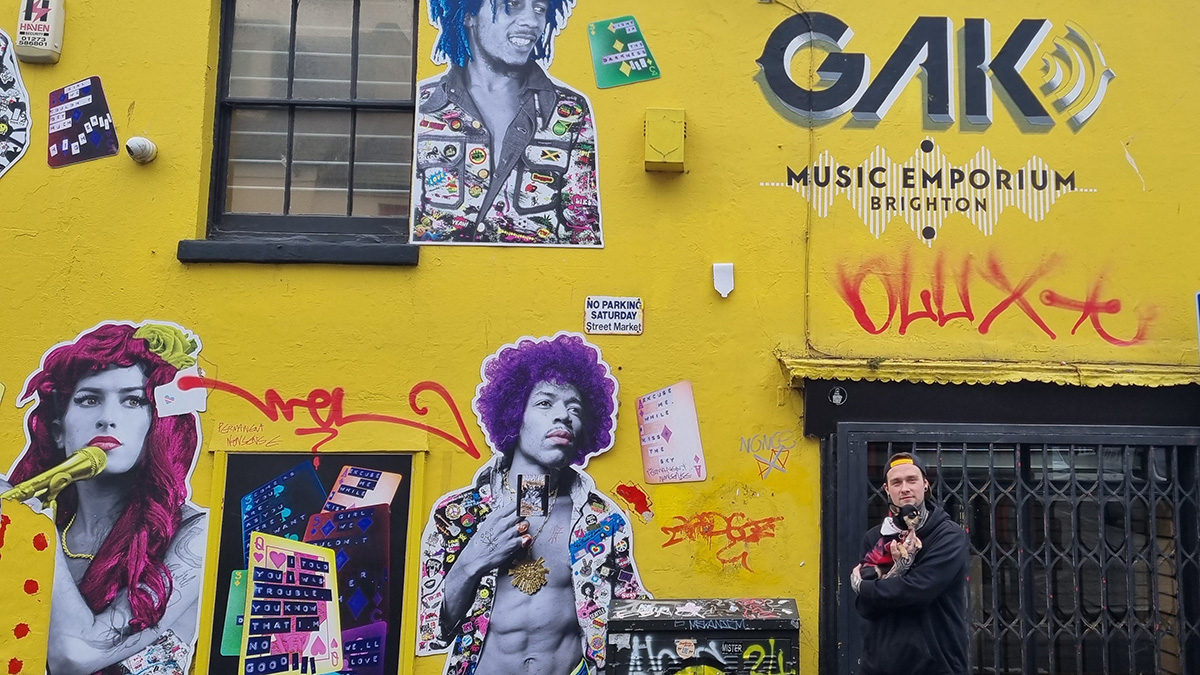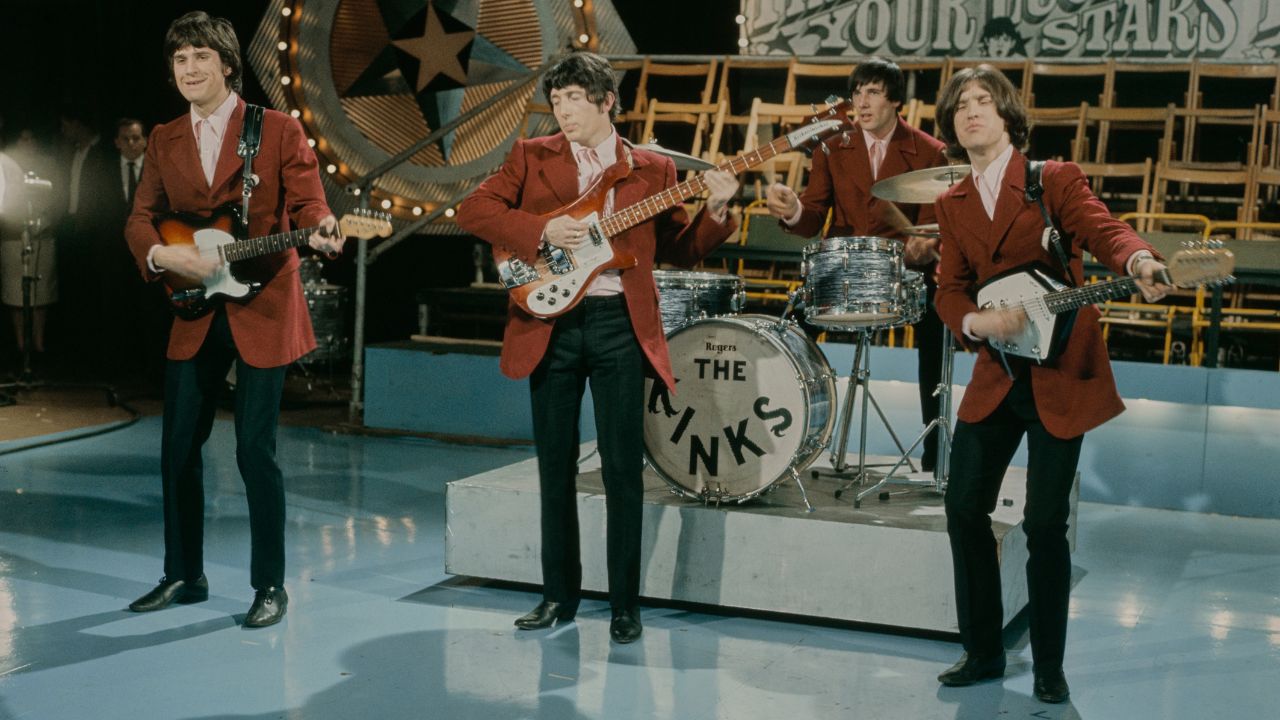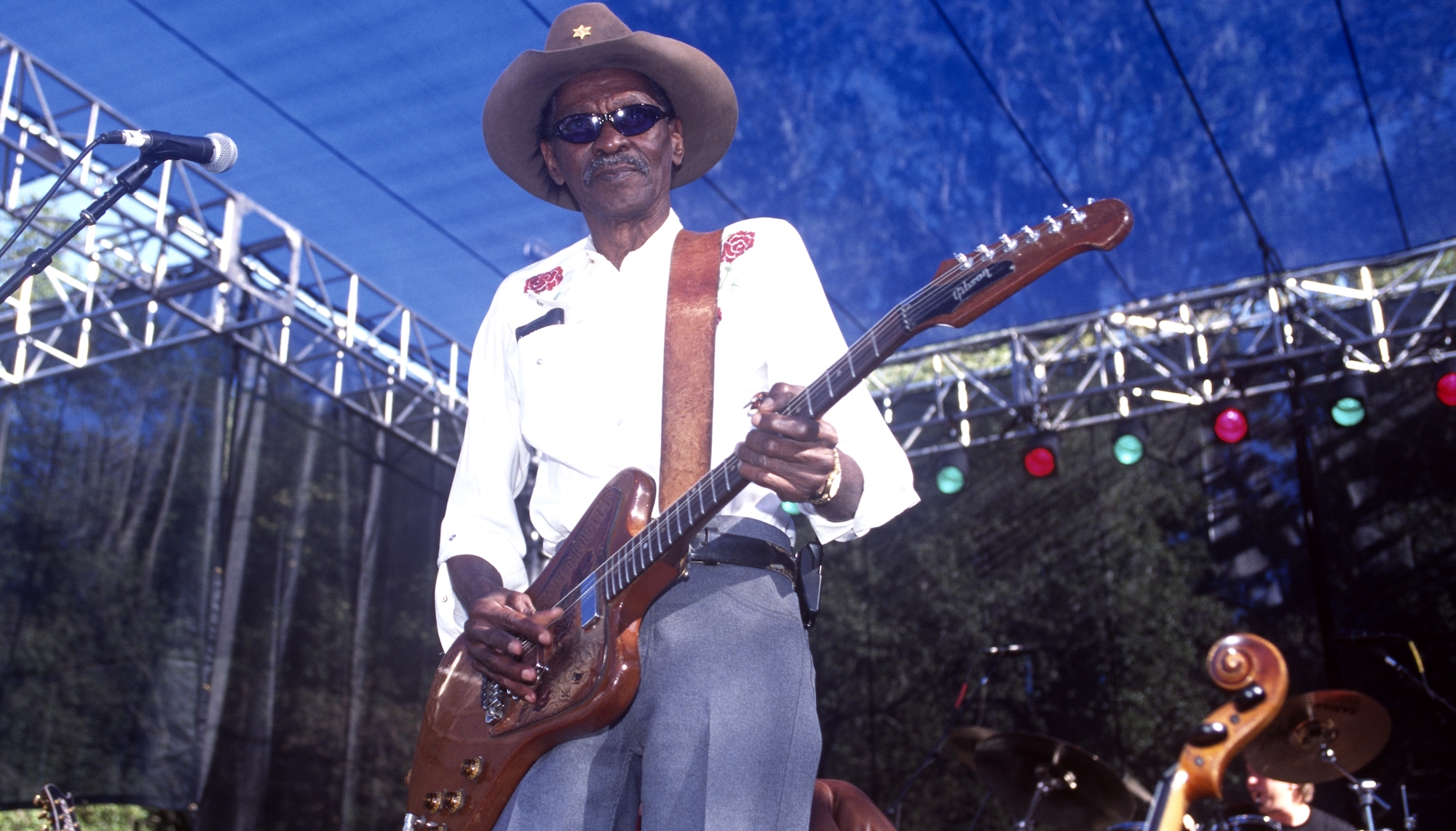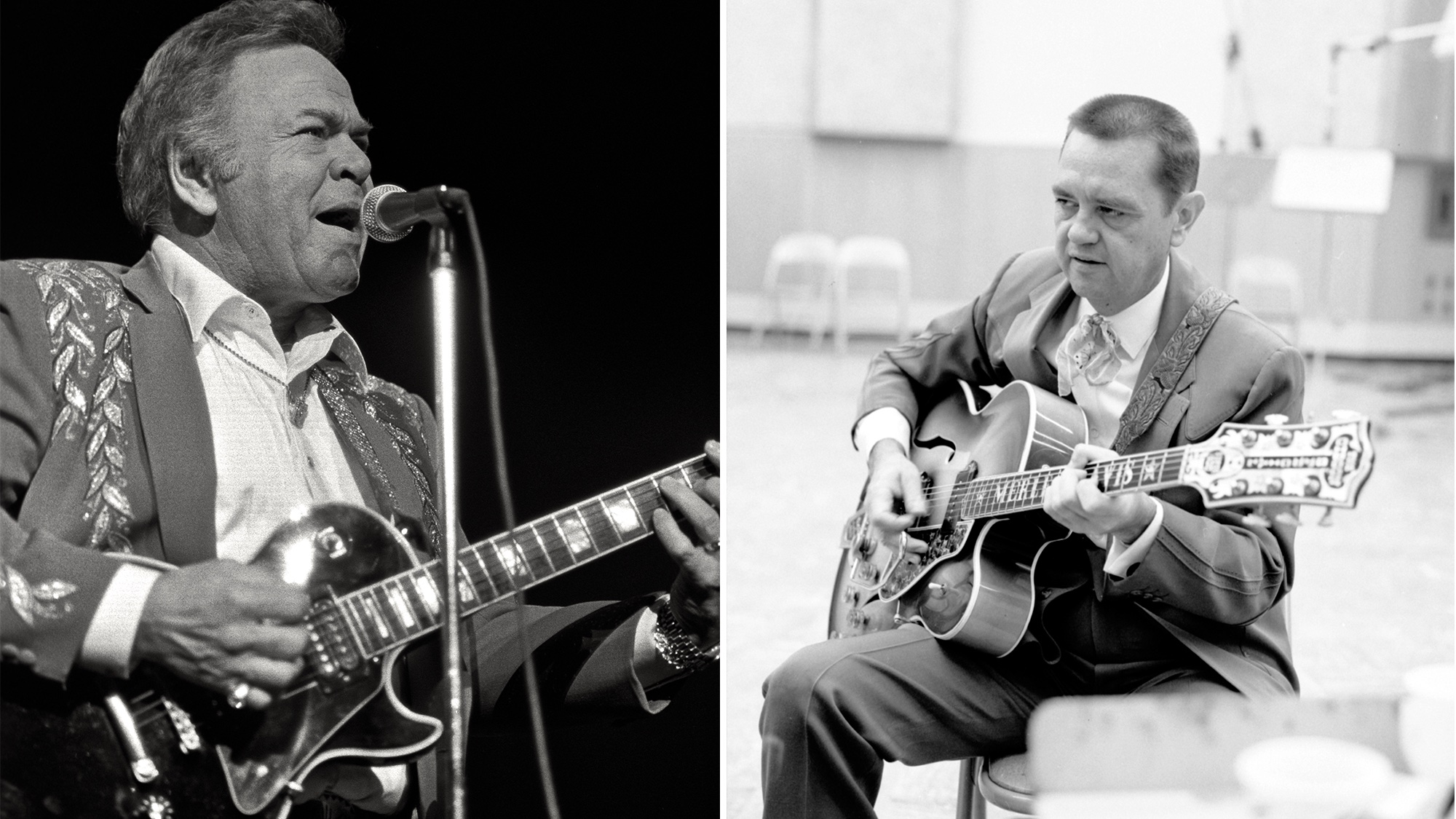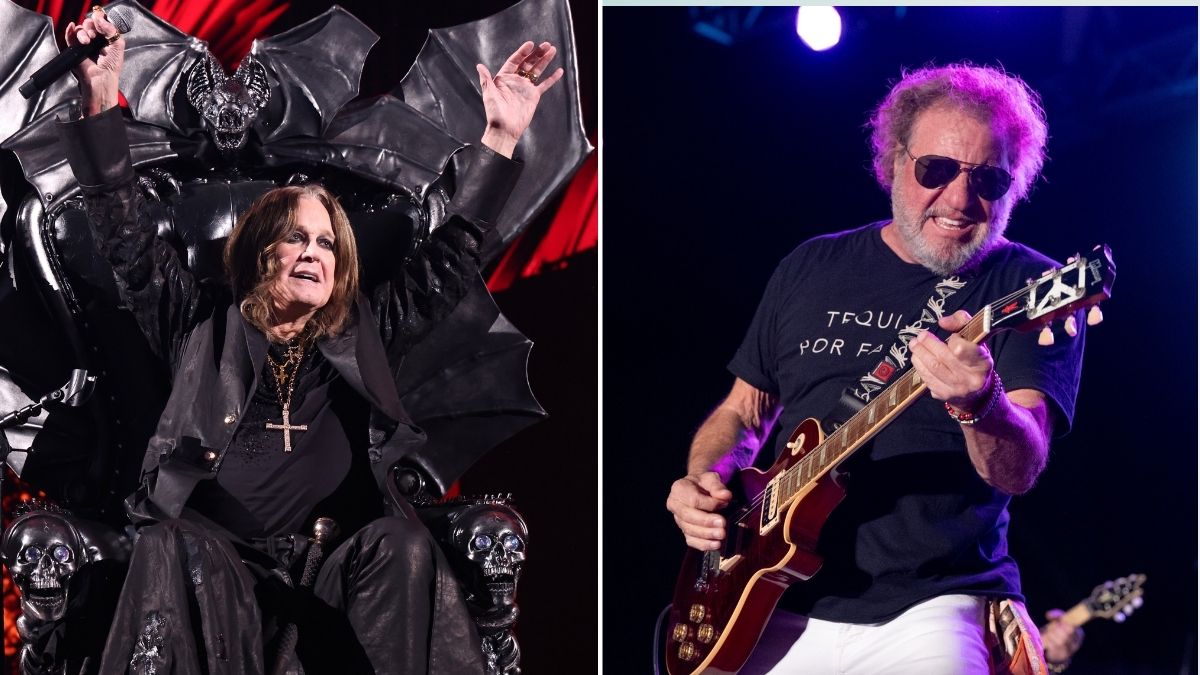This instrumental virtuoso is evolving this tiny, traditional Brazilian guitar – and jamming with Steve Vai provided the inspiration
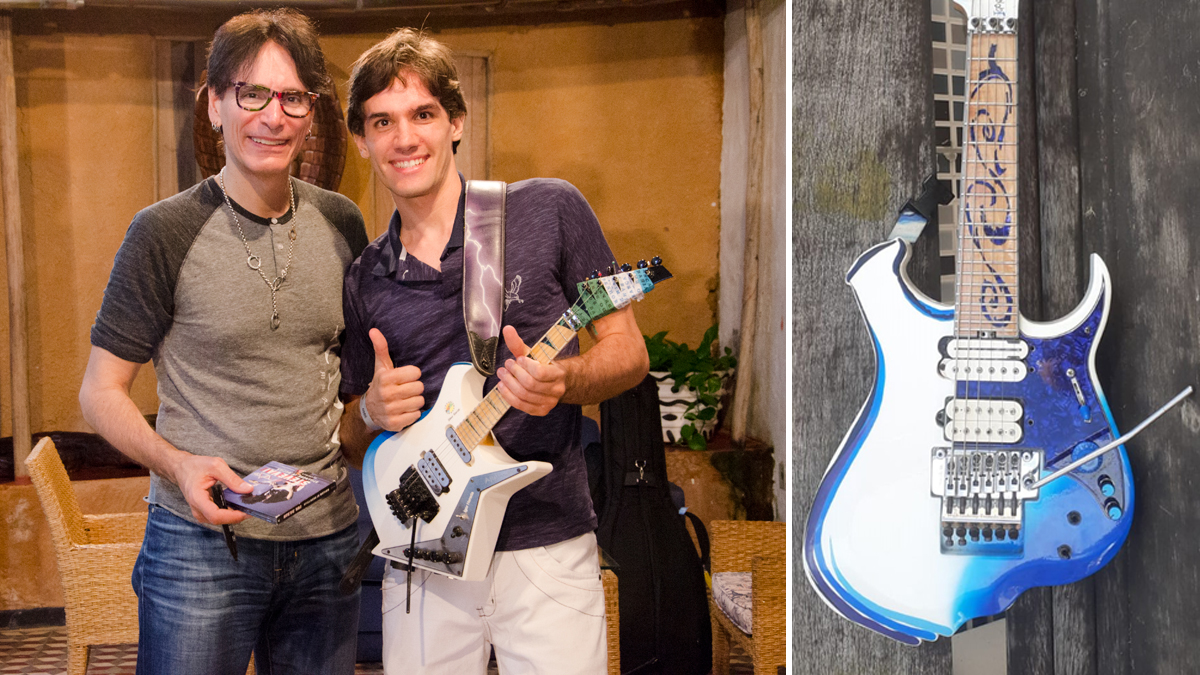
Electric guitars, acoustic guitars and bass guitars are some of the most recognizable instruments on the planet. Though there are numerous distinguishing features – make, model, specs, finishes and more – most people will be able to identify a guitar when they see or hear one.
There is a type of guitar, however, that is overlooked by Western listeners, and which many will be unable to name. It doesn’t conform to the scale length, tuning and six-string norms we’re accustomed to, and is instead another beast altogether – an incredibly small, pint-sized beast at that.
We’re speaking of the Guitarra Baiana, or Bahian guitar – a tiny four-string model descended from the “electric log” that was created in Salvador, Brazil, in the 1940s by Adolfo “Dodô” Nascimento and Osmar Álvares Macêdo.
It’s a traditional instrument in the truest sense of the term, and though the “electric log” developed throughout the ‘70s to flash an extra string and some radical body shapes and specs, the Bahian guitar has remained true to its Brazilian instrumental heritage.
That is, however, until now. Enter Igor Hereda, a Bahian guitar aficionado who is innovating the instrument to accommodate his own unique way of playing. Not only that, he’s also crossed paths with Steve Vai, who in turn helped Hereda on his way to bridging the gap between two radically different guitar worlds.
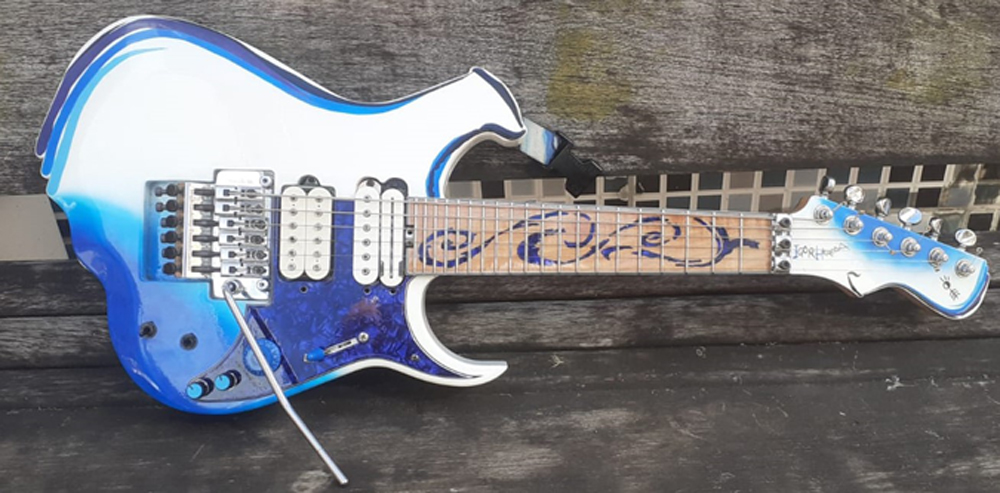
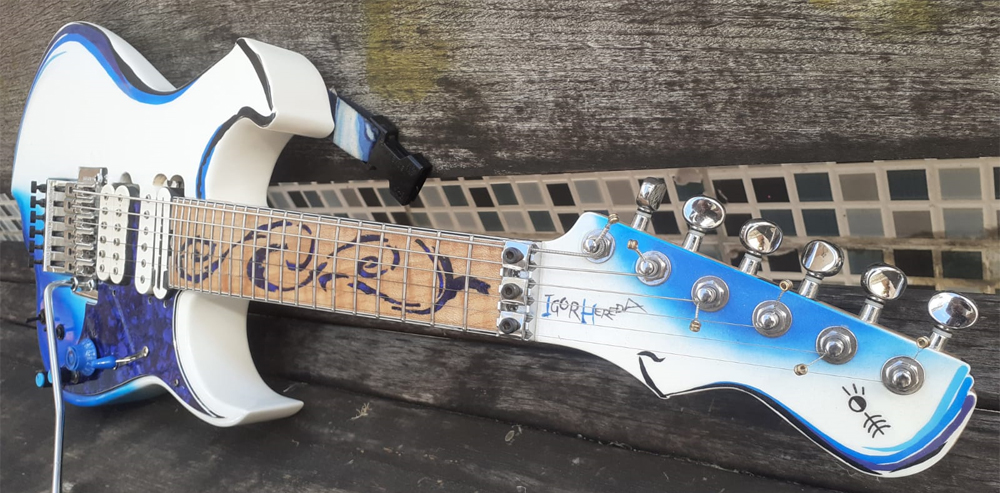
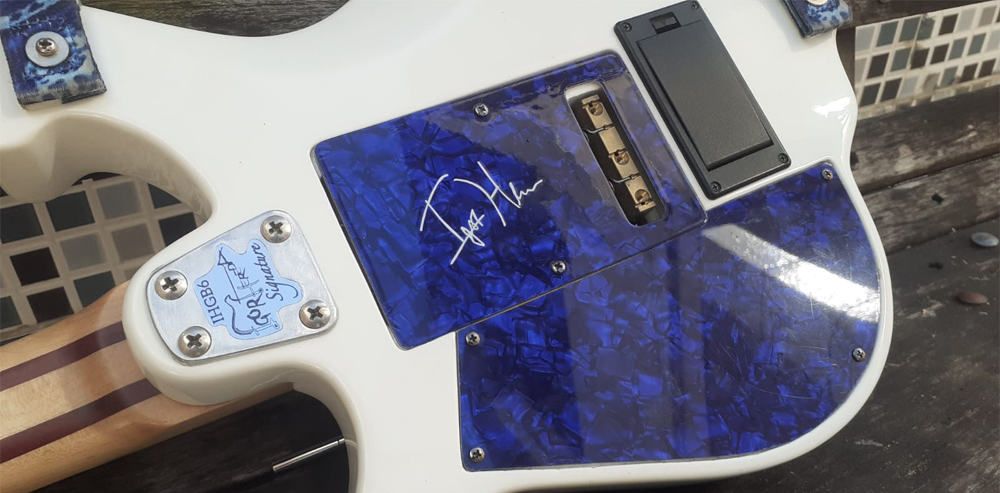
Used exclusively throughout the ‘50s and ‘60s for instrumental music during festivals and celebrations in Bahia, the guitar remained untouched by US companies such as Fender and Gibson who were at the cutting edge of guitar design during these decades, and is considered to be the world’s first-ever electric mandolin.
Tuned in intervals of fifths – C, G, D, A, E – and featuring a scale length that usually varies between 13” and 14.5”, the Bahian guitar is radically different from the 24-25.5”-scale models we’re familiar with, and as such can be used to conjure up wildly unique Brazilian Frevo music.
Get The Pick Newsletter
All the latest guitar news, interviews, lessons, reviews, deals and more, direct to your inbox!
Hereda started playing the Bahian guitar at the age of 12, influenced by the work of Macêdo’s son, Armandinho – a preeminent Guitarra Baiana player who Hereda reports to be an “ icon of the Bahian Carnival, the largest popular street party in the world”.
Since then, he’s embarked on a playing journey that has led him to where he is today: at the very edge of Bahian guitar music, championing an electric guitar-inspired approach to both playing and design, which is underpinned by his own radical model: an experimental six-string creation that aims to harness the playability and tones of standard electrics.
He’s also tapping into genres rarely explored via the fretboard of a Bahian guitar, with his own original material exploring rock, jazz, blues and funk styles, as opposed to exclusively Brazil’s traditional Frevo carnival music.
When asked about the inspiration behind his Bahian experiments, Hereda explains it was all about pushing the instrument beyond its limits, and harnessing a previously unobtainable collection of ranges, tones and techniques.
“The need for the transposition of techniques, harmonies and melodies from the electric guitar to the Bahian guitar [inspired me],” he says. “Such as the range of lower regions, similar to the sixth string of the electric guitar.
“With the inclusion of the sixth string in the Bahian guitar, it is possible to increase the harmonic field of the instrument,” Hereda continues, “providing the formation of chords in tetrads and the use of more practical dissonant chords, altered and heavier riffs”.
Ultimately, Hereda’s tinkering sought to bridge the gap between the Bahian guitar and the electric guitar, and overcome some of the major differences while still retaining its Brazilian heritage.
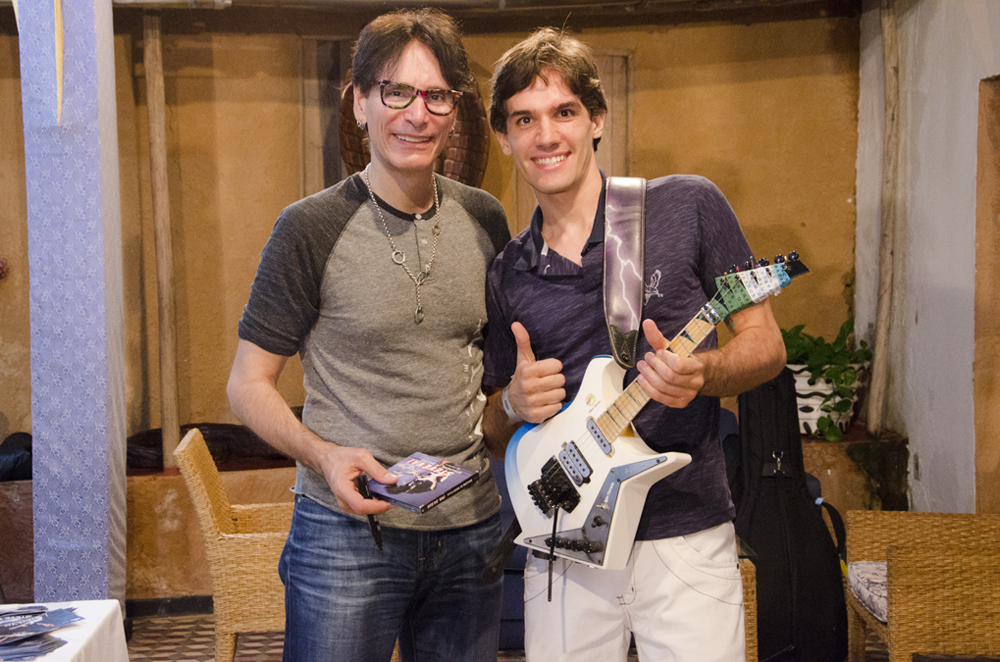
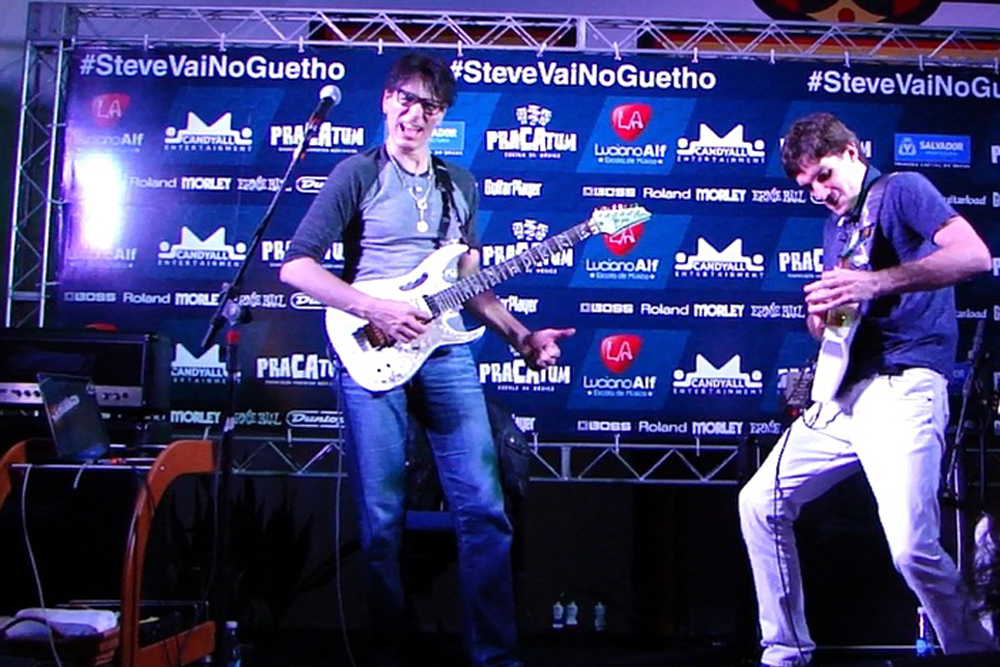
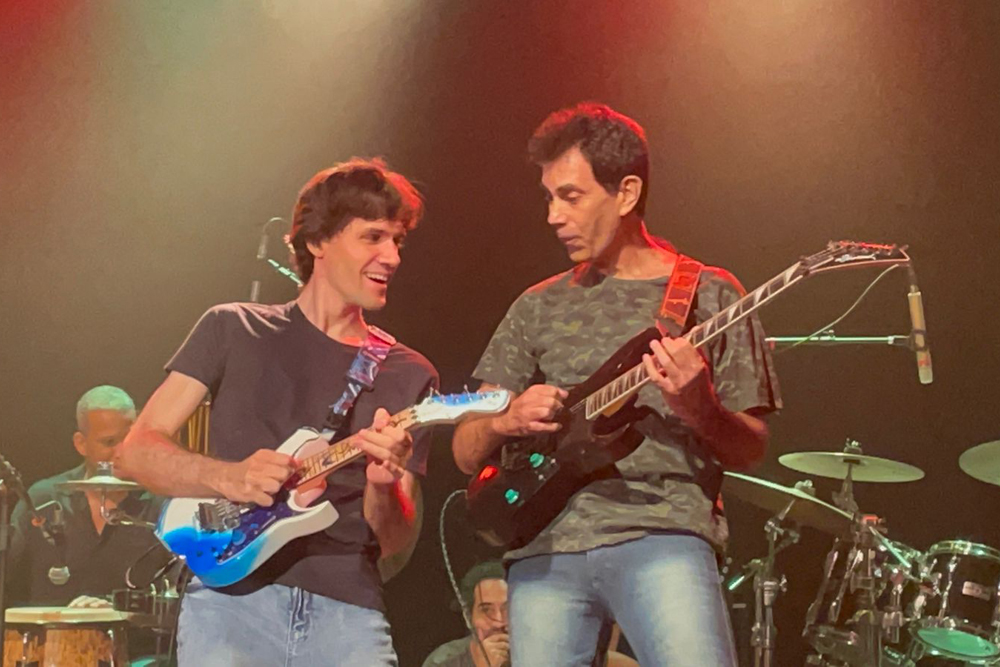
There was, however, another inspiration behind Hereda’s innovation of the Bahian guitar: Steve Vai.
As he recalls, Hereda first met Vai back in 2015, when he was still playing a five-string Bahian guitar. At the time, the Ibanez signature artist was making his way through Brazil, and held a competition in which the winner would be able to participate in a jam session with him.
Of course, Hereda won it, and was able to present the Bahian guitar and his unique approach to playing to one of the electric guitar world’s finest exports.
“It is indescribable to have won the contest and been able to participate in a jam session with him, where I had the opportunity to present the Bahian guitar and my way of playing it, which is inspired by him,” Hereda recalls. “He was impressed by how I played such a small guitar in a similar way to electric guitar, using techniques such as tapping. This undoubtedly inspired me to create my own model of six-string Bahian guitar.”
Footage from the occasion is available, showcasing just how Hereda has been using the Bahian guitar. Vai’s amazement – especially at the 1:30 mark – can hardly be contained, as he watches on while Hereda goes to town on his minuscule fretboard.
Not only did his experience with Vai inspire Hereda to create a six-string Bahian model, it inspired him to make a signature guitar of his own. Made in collaboration with Bahian luthier Yuri Barreto, Hereda’s eponymous model takes inspiration from PRS and Ibanez guitars, and was built in secret for two years.
Its spec sheet features two DiMarzio pickups – a humbucker and a single coil – and a Fernandes sustainer in the neck position, as well as a floating tremolo, custom wave inlays and, of course, that all-important sixth string.
As for where he plans to take the Bahian guitar next, Hereda says further development is “natural” and inevitable, and that such innovations will closely resemble modernist updates that are emerging in the conventional electric guitar market.
“I believe the modification of the instrument in the future is natural, in search of new musical challenges,” he says. “I am already researching and dedicating myself to the development of a version that uses a fanned fret scale and incorporates Fernandes’ sustainer to the Bahian guitar.”
Right now, though, Hereda is focusing on his own original music and exploring the sounds his current signature model can provide. In December, he released Pôr do Sol – Sunset – his debut album, which explored blues, jazz, funk and rock music via the fretboard of his Brazilian instrument.
Throughout his tracks, a range of conventional electric guitar techniques and tricks can be heard: two-hand taps, dizzying legato licks and even some knockout riffs – all of which probably weren’t entertained on the original “electric log”.
Whether we see a seven or eight-string version of Hereda’s signature model in the future, or whether the intrepid instrumentalist decides to djent or chug on it remains to be seen. We imagine it’s certainly crossed his mind, though.
Head over to Igor Hereda’s YouTube channel to keep up to date with his Bahian guitar exploits.

Matt is the GuitarWorld.com News Editor. He has a Masters in the guitar, a degree in history, and has spent the last 16 years playing everything from blues and jazz to indie and pop. When he’s not combining his passion for writing and music during his day job, Matt records for a number of UK-based bands and songwriters as a session musician.
“My brother's trying to knock Norm down in price. He's worth $800 million. He goes, ‘I'll give you a bottle of whiskey on top’”: Frank Stallone on the prized vintage Epiphone that Sylvester bought him – and the guitar's mysterious origins
“More people play stop-tails than guitars with locking tremolos. We dig both”: EVH delivers on its hardtail promise and launches the Wolfgang Standard T.O.M. – which vows to take Eddie's legacy to new heights
